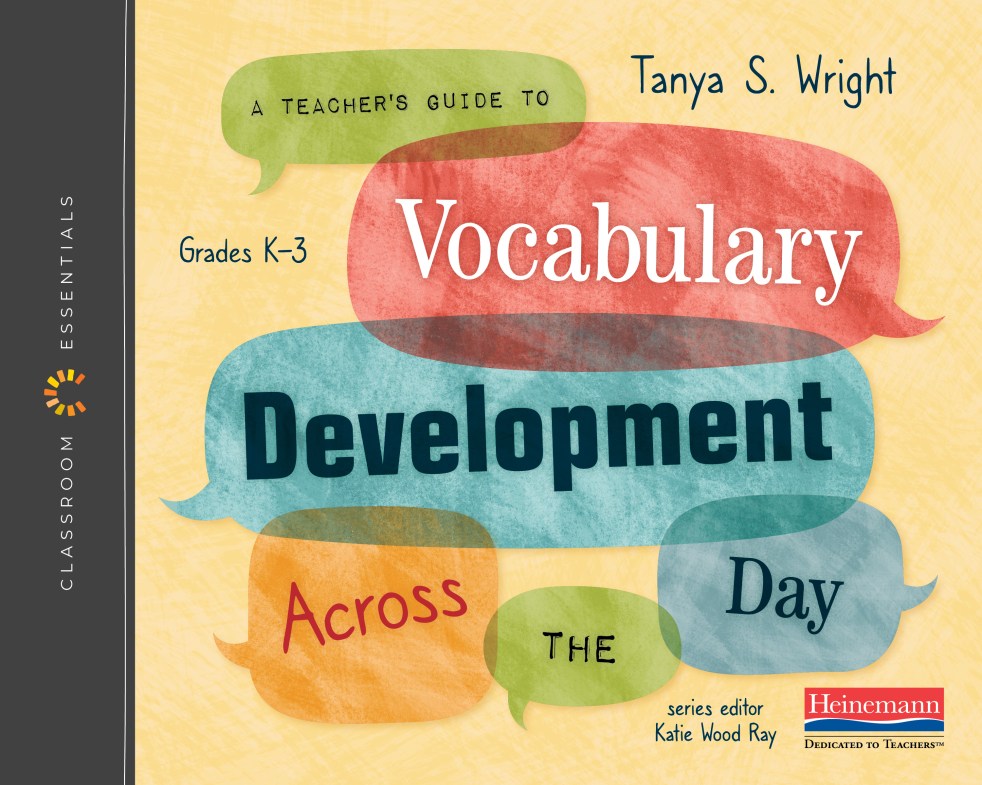How can I be clear about aligning what families hear me teaching with what their children are doing with the feedback both they and I offer kids along the way?
Category: remote learning
Vocabulary Development Across In-Person & Remote School Days
A Teacher's Guide to Vocabulary Development Across the Day is filled with practical ideas for teaching vocabulary in K-3 classrooms. It is a resource that will help you develop an innovative and meaningful vocabulary curriculum for your students. Listen to an interview with the book's author and preview sections of the text.
The Three E’s of Remote K
Janet Ahn and I share our strategies and ideas for teaching the youngest writers in remote settings.
Two Strategies to Keep Connected During Remote Instruction
According to the co-founder of Bithiah’s House, a nonprofit organization for foster youth, Michelle Thompson, " 61% of the population, both adults and children, have experienced at least one form of trauma in their life."
Composing, Collaborating, Conferring, Conversing: Keeping an Eye on Student Writing During Remote Instruction
Today, TWT is honored to have Jennifer Serravallo as a guest writer, sharing ideas related to student writing during remote instruction.
How do we get to Know our Writers Remotely: A Case Study
There's no question it is challenging to get to know writers deeply via Zoom. And yet. . . something is working, because all of my remote kindergartners are writing. They are all making books. And while I might not have an hour each day to be side by side with them in the classroom, there is no question I am finding ways to get to know what kind of writers they are and what they need.
Connecting with Students Online: Strategies for Remote Teaching & Learning
The book you need right now. Jen Serravallo's newest book for remote education has hit shelves. Take a peek and enter the giveaway!
Easy Ways to Create a Healthy Ergonomic Set Up for Your At-Home Learner
For years, therapists have known that body positioning to increase attention and upper extremity stability is important. But those strategies have focused on children that have been seen by therapists in classrooms and clinics to address decreased attention span, core stability, and handwriting concerns. Today, Karen Reale, an occupational therapist, provides tips and tricks that can be applicable to any child who is learning in a classroom, hybrid setting, or at home this fall. This quick, informative post will help teachers educate caregivers on the importance of healthy positioning at home or wherever their child does their schoolwork.
My Three Remote Teacher Survival Tips
As we all venture into another week of instruction, no matter what that may look like, I have three tips for surviving and thriving in these times.
Three Quick Tips for Maximizing Time at the Beginning of a Virtual Writing Workshop
Students in digitial writing workshops need to be focused and ready from the moment they enter the remote classroom space. Here are three tips you can use with your students to get writing workshop underway so you don't lose time waiting for students to arrive, find pencils, etc.
A Letter to Families as we Launch Remote Writing Workshop
As I considered what to write this week, I decided to share a piece I was crafting for back to school, as an instructional coach/remote kindergarten teacher this year. The process helped me to focus on what families might need, as they experience writing workshop in new ways (i.e. at their kitchen tables).
Writing About Reading: Building a Resource Toolkit for Middle School
Calling all middle school teachers! Today I'm sharing a ready to use resource toolkit for adolescent readers and writers featuring the book, Look Both Ways, by Jason Reynolds.











